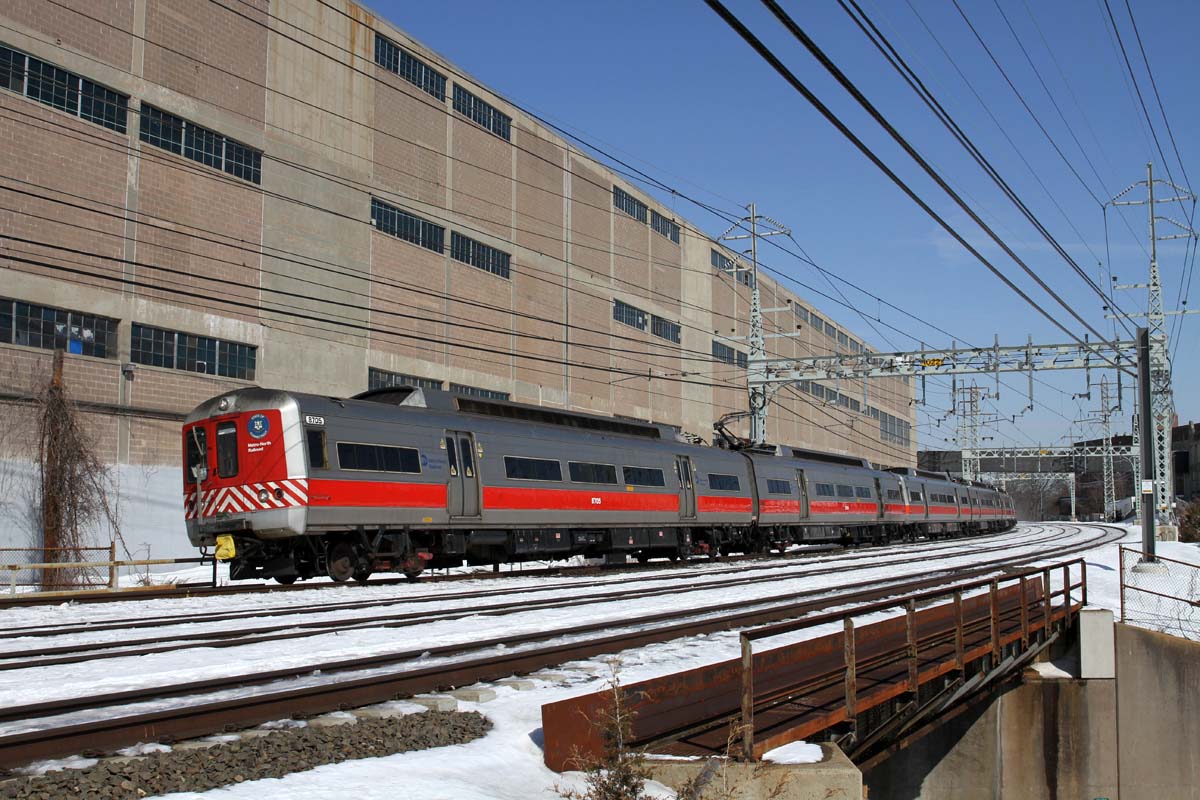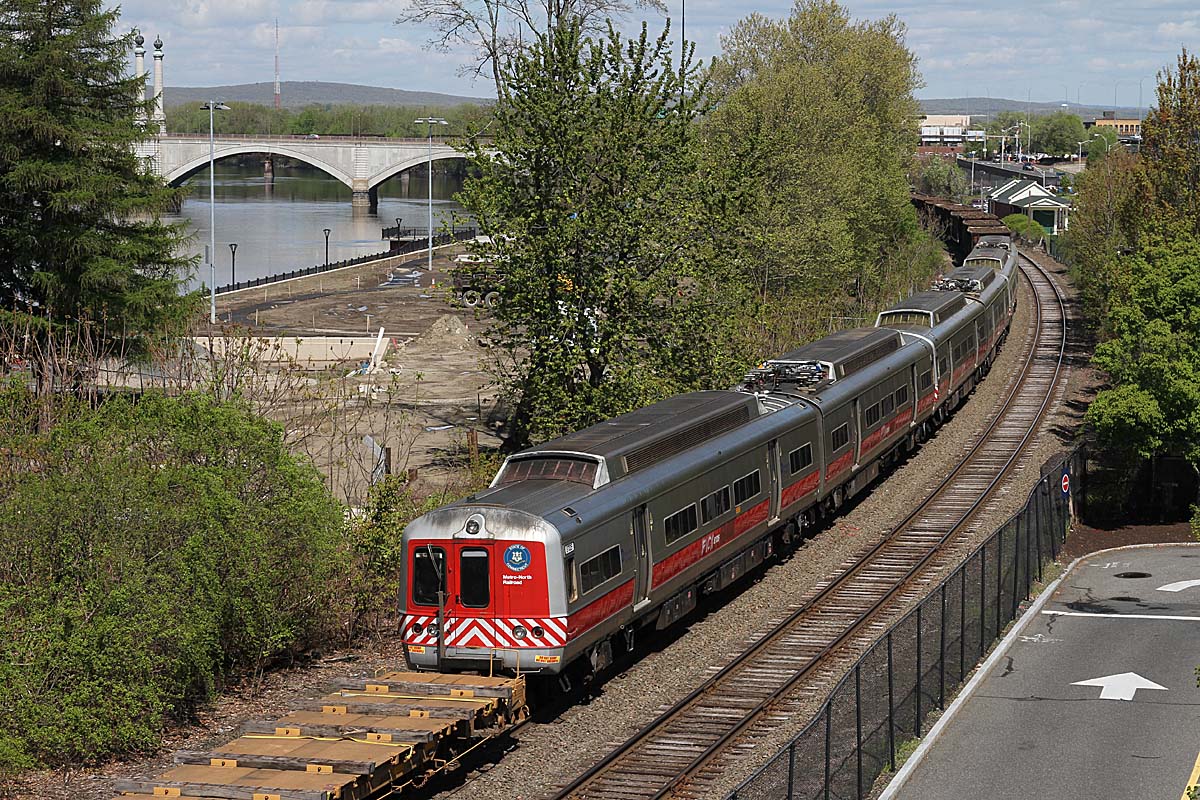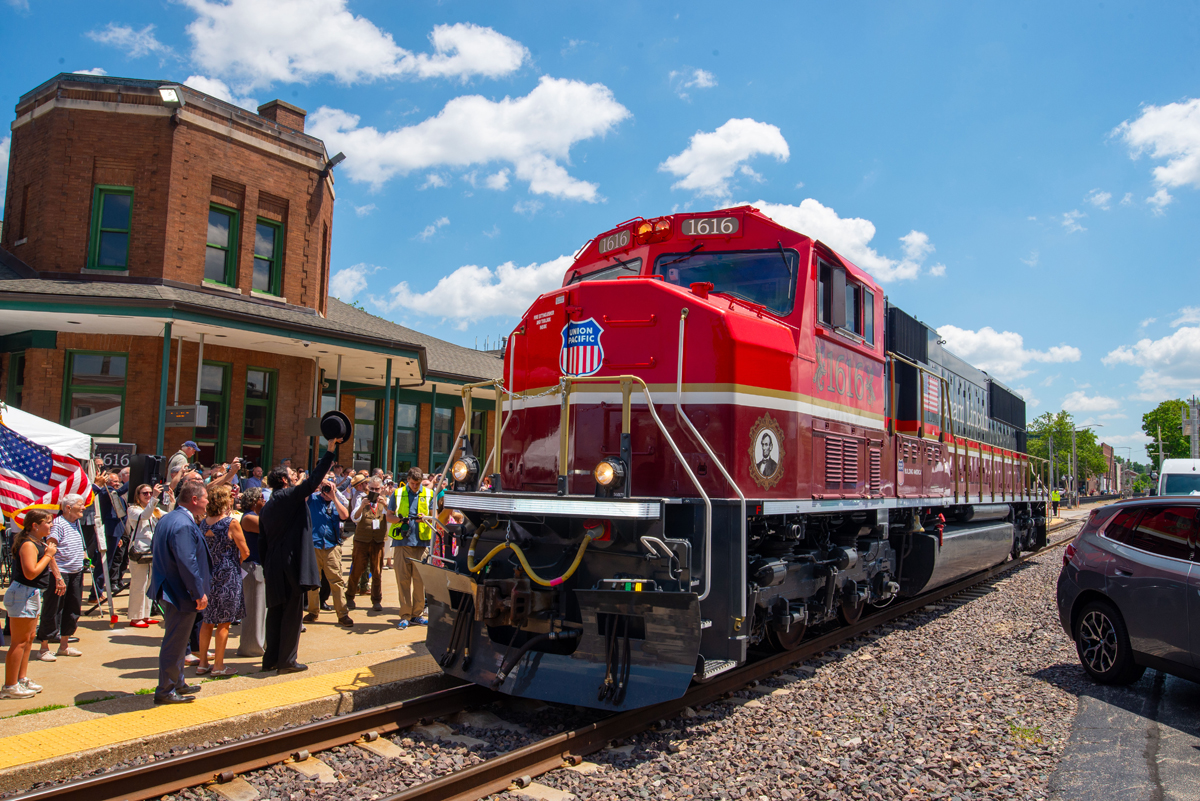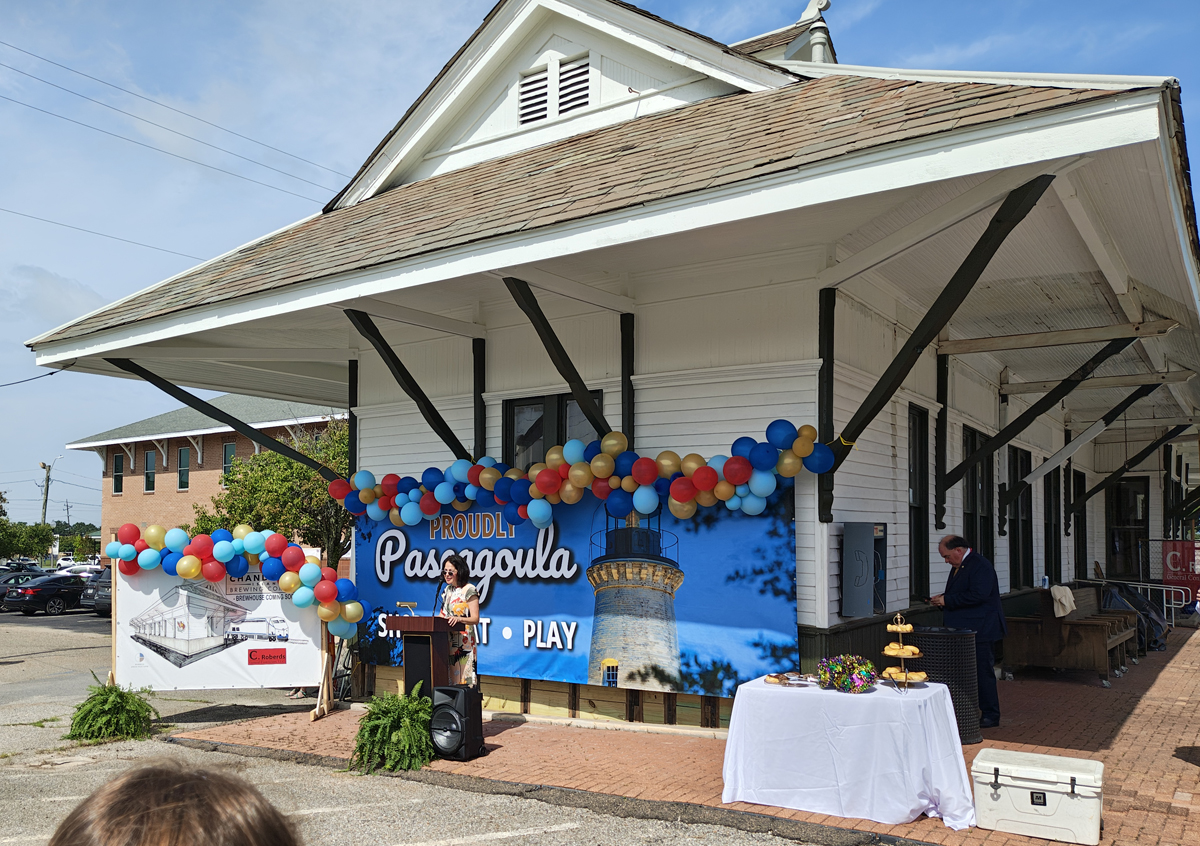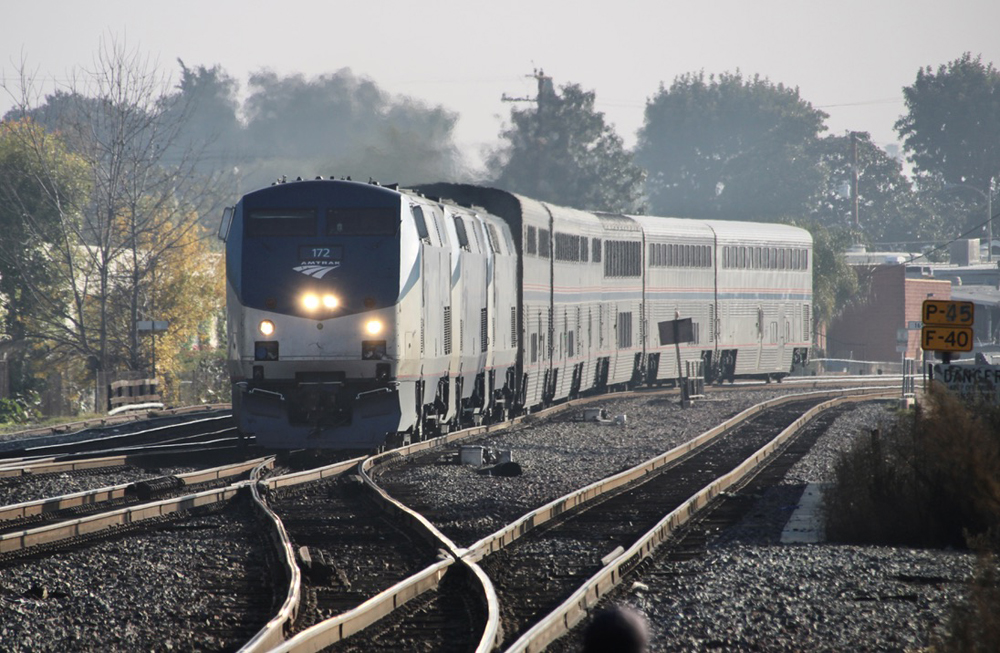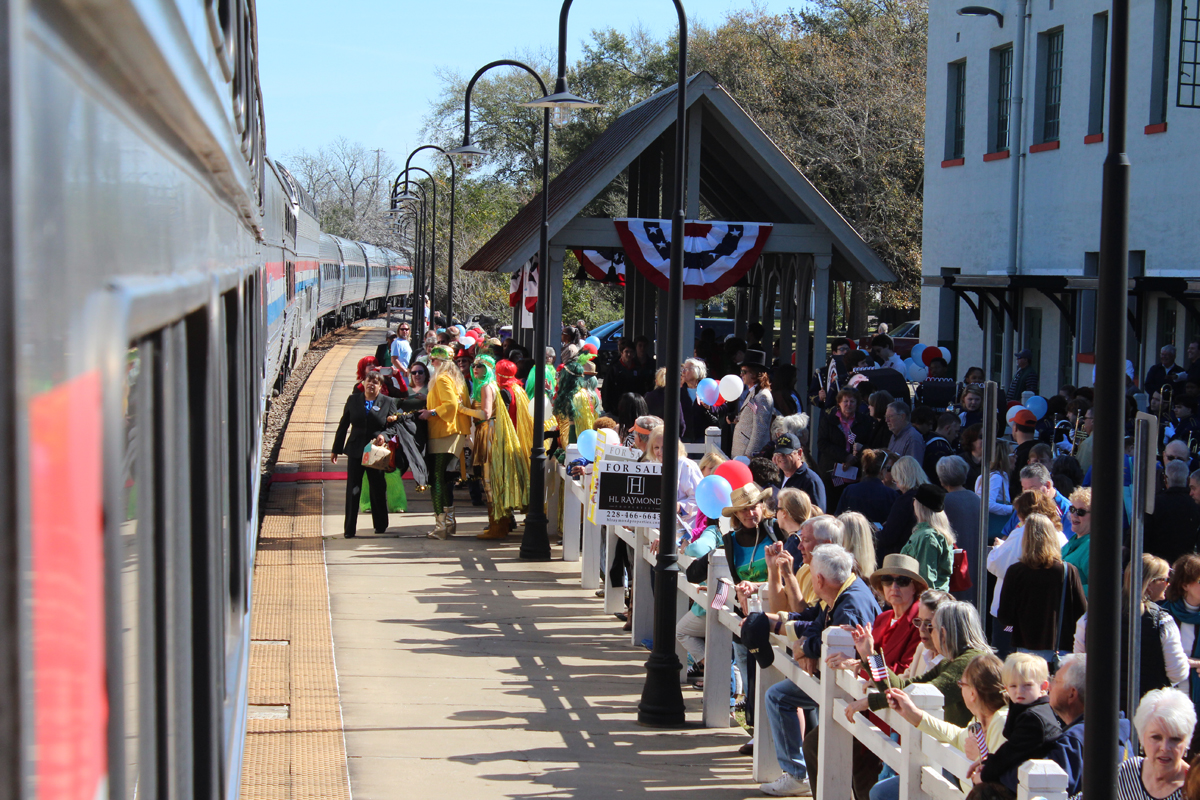The Dec. 31, 2018 deadline for Positive Train Control finally caught up with the last operating M2s. None of the elderly cars had received positive train control equipment, and Metro-North retired the last of them at the end of the year. Still earning revenue right to the end, a train of six M2s made its last run on Dec. 28. Through spring 2019, those last M2s left New Haven and moved via Connecticut Southern and CSX Transportation freight trains. Carrying spray-painted “FICX” reporting marks (for Frontier Industrial Corp.), the cars were going to Ohio for scrapping.
The arrival of the first M2s, called “Cosmopolitan” cars upon delivery, in 1973 were a breath of fresh air for commuters on Penn Central’s 73-mile former New Haven Railroad route between New Haven and Grand Central Terminal in New York City, as well as the electrified branch between Stamford and New Canaan. The 100 Pullman-Standard M.U. cars built for the New Haven in 1954 had suffered from deferred maintenance by the bankrupt NH and successor Penn Central. Even older PC coaches, pulled by tired FL9 dual-mode units or EP-5 rectifier electrics, also covered many New Haven Line commuter services until the M2s took over.
By the time the M2s arrived, the states of Connecticut and New York had acquired control of their respective portions of the New Haven-GCT line. Public funds paid for the 244 new cars. Prior to the delivery of the first M2s, high-level station platforms required for the new cars were installed at all stops along the former New Haven main line from New Haven to Mount Vernon, N.Y.
Penn Central (and beginning in 1976, Conrail) continued to operate the well-patronized commuter trains. In 1983, the newly formed Metro-North, part of New York’s Metropolitan Transportation Authority, took over operations of all commuter services out of Grand Central to New York and Connecticut points. Connecticut contracts with MN to operate the trains in its state.
MTA and the State of Connecticut each purchased 122 of the M2s, and each agency’s cars carried their owner’s markings. The Penn Central M1s carried wide blue bands along their sides. The new M2s arrived with orange bands. The official reason for the new color seems forgotten more than four decades later. Some say it was simply to distinguish the New Haven cars from “Hudson” and “Harlem” trains, but others claim that managers chose the color to keep alive the memory of the old New Haven Railroad. Bands painted in a variety of oranges and reds carried over to later generations of M.U. cars, right up through today’s Kawasaki M8s.
Continuing ridership growth on the New Haven Line mandated additional equipment, and new cars followed the M2 design. Tokyu Car Co. built 54 M4 cars (in three-car sets) in 1987, and Morrison-Knudsen delivered 48 triplet M6 cars in 1994. The three types could operate with each other on trains. Over the years, all three M.U. types benefited from several major overhaul programs as they continued to provide most of the commuter services on the New Haven Line.
The newer Tokyu and Morrison-Knudsen cars all had been stricken from the roster by 2015. Two sets of M6s were donated for emergency services training in New York and Connecticut.
Even with the newer M4s and M6s gone, the pioneering M2s, which had carried generations of Connecticut and New York workers to and from their jobs, as well as millions of weekend visitors to “The City,” soldiered on. Earlier Metro-North stalwarts, such as the dual-mode FL9 locomotives and former NYC “ACMU” multiple unit cars were recognized on farewell excursions, but the M2s went out without fanfare. Fortunately, Connecticut Department of Transportation saw fit to donate a pair of M2s to the Danbury Railway Museum. The museum, located in the former New Haven freight yard in Danbury has acquired and preserved a growing number of pieces of rolling stock from Metro-North predecessor railroads, and the M2s fit nicely into the collection, according to museum president Stan Madyda. The pair are numbers 8606/8707, and were part of the final revenue train last December. Madyda says that the cars’ interiors are in very good condition, and they already are open for public viewing. More generations will be able to see the cars that had been a common sight on the New Haven Line for many years.





